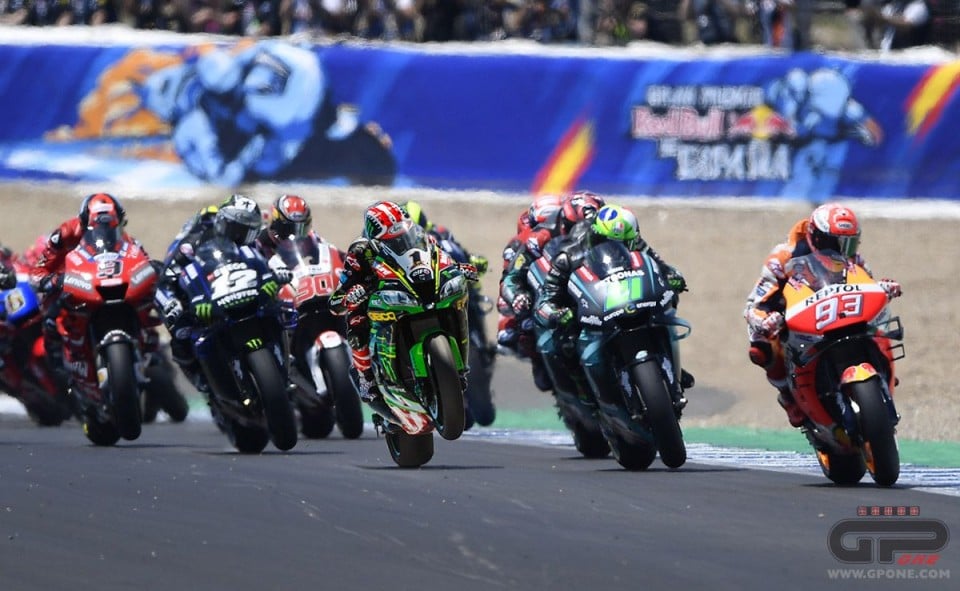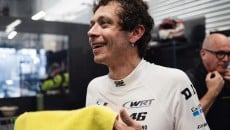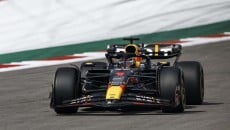Yes, we confirm that there is an intruder in the cover photo, and we have little doubt that you recognized him immediately. The photo shows the group of MotoGP riders intent on attacking the second corner at Jerez and I think we can all agree that Jonathan Rea was not really present on the track at the time of the shot. Yet the statements made by Carmelo Ezpeleta have aroused a certain amount of interest (read HERE) so it was normal to imagine the five-time SBK world champion on the track against Marc Marquez, Fabio Quartararo, Valentino Rossi and all the other top MotoGP riders.
Obviously, we need to have a careful look at the information in our possession to see what might actually happen in the event of a scenario of this type .
SBK and MotoGP: from brakes to tyres, through electronics. Worlds apart…
Let's imagine that the request to enter Jonathan Rea as a wild card in a MotoGP race was accepted by Dorna. We would immediately have to understand what sort of technical package the Kawasaki would bring to MotoGP. The differences in regulations between the two categories actually make the two bikes very far from each other. On the one hand we have a motorcycle with a (minimum) link with the mass-produced product. On the other, there is a prototype that has some limitations, but which represents the tip of the iceberg of technology applied to motorcycling.
So how much could the Kawasaki SBK be modified to be minimally competitive in MotoGP? The first element that could be replaced without any problems are the brake discs, with the ZX-10 RR adopting the carbon discs used by the prototypes and banned in the production-based series. An important change, and one that would ensure that Rea wouldn’t lose too much from his MotoGP rivals under braking.
Then there would probably be an easy intervention to be performed on the engine rpm limit. This rule was introduced in SBK to avoid too much difference between the standard engine and the model that races on the track, but all the manufacturers could run their engines much higher, to gain horsepower wherever needed on the track, or in the red area of the tachometer. The four-in-line engine of the Kawasaki would not perhaps reach the levels of its Japanese sisters in MotoGP, but it would certainly gain some fundamental hp to reduce the potential gap in top speed and above all in acceleration.
Another element that would be interesting to evaluate for SBK is aerodynamics. In SBK the problem has only been addressed by Ducati which has homologated the Panigale V4R with its now famous fins and by Honda, with the brand new CBR RR-R which will make its debut in the race at Phillip Island. A motorcycle put on the track by Kawasaki in MotoGP would not be obliged to have the same shape as the series model, so we could quite easily imagine the presence of some aerodynamic devices to stabilize the motorcycle in acceleration and braking.
The last aspect, which is probably the most decisive one, is related to tyres. There is an abyss between the Michelins used in MotoGP and the Pirellis from SBK and we are not talking about performance levels. The tyres that equip the prototypes are built to make the razor-sharp chassis of the MotoGP bikes work perfectly, have a very rigid casing and a very different construction criterion from the one used on the production-based bikes. On the contrary, the Pirellis that Rea routinely uses in SBK are tyres built to make the frames of the standard motorcycles work at their best, have a strong link with the tyres that can also be purchased by enthusiasts and in general have a softer construction.
Then there is the variant represented by the qualifying tyres, which in the case of Pirelli means having a soft tyre with a very high limit, but a very short duration. A condition that is not present in the current MotoGP. Could the frame of the Kawasaki ZX-10 RR make the MotoGP Michelins work well, or would it have to be modified through the addition of reinforcements to try to increase the torsional stiffness values? Kawasaki has a past in the prototypes category and certainly would not be completely unprepared for this point of view.
How would Jonathan Rea go in MotoGP qualifying?
But let's move on and analyse the numbers, the ones we have at least available. Let's consider three very different types of tracks, namely Losail in Qatar, Jerez in Spain and the splendid Phillip Island in Australia. If we take the times with which Jonathan Rea qualified in the SBK rounds of these races and put them into the starting grid of the respective MotoGP races we would find a very heterogeneous situation. On the one hand we would in fact see that Rea is able to start from sixth place on the grid at Phillip Island, while on the other hand he would only have been able to start respectively 19th in Jerez and 24th and last in Qatar.
The explanation is very simple for this profound difference and lies above all in the difference in engine between MotoGP and SBK, which becomes more evident on a track like Qatar. While it is true that at Phillip Island, a track with a single straight worthy of note and with numerous flowing linked corners, the difference is very minimal (Rea would be less than 1 second slower than poleman Vinales), it is equally true that the qualifying sessions of their respective races took place in very different climatic periods, so maybe the gap on the same day would have been even greater also in Australia.
However, it is impressive to note that this gap reaches almost three seconds in Qatar, the track that more than any other enhances the differences between the two categories. Even admitting that it is possible to improve the SBK Kawasaki by adopting some MotoGP solutions for a single race, how much of this three-second gap would it be possible to reduce?
In the race there would be no contest…
We could say that Rea's performance in MotoGP riding a Kawasaki is not too far on at least one of the three tracks listed and we are referring to Phillip Island. So, let's think about what Rea could have done in the race, keeping in mind his pace during race 1 in 2019, when he was beaten by Alvaro Bautista on the Panigale V4.
In those circumstances, Jonathan lapped at an average race pace of about 1’32.3 per lap, a tenth here, a tenth there. In 2019 the Phillip Island MotoGP race was won by Marc Marquez who after a strenuous fight with Vinales completed the 27 laps of the Grand Prix in 40'43.729 maintaining a pace of 1'30.5. That’s an impressive figure, especially compared to the pace kept by Rea in the SBK race. The gap at the finish line would have been 48.6 seconds between the two, a timing that possibly would have allowed Rea to finish in about 15th place, behind Karel Abraham and his Ducati and ahead of Jorge Lorenzo.
We are well aware of how abstract the numbers are, considering also all the variables. But by looking at the numbers and evaluating the changes that Kawasaki could do to enter Rea on the track as a wild card in a MotoGP race, it seems difficult to imagine that the five-time Superbike world champion could fight for a top position against the prototypes.
Yet it should be pointed out that if Kawasaki made such a request, they must have done some very accurate homework. Entering an icon for the Akashi brand as Jonathan Rea currently is, and not being sure that he can at least do well on the track among the MotoGP bikes, appears to be a sort of media suicide and it is difficult to believe that they haven’t done a feasibility study. Perhaps the engineers evaluated many other parameters and are convinced that with the right modifications and some interventions on the bike, the ZX-10 RR would be able to compete if not exactly on equal terms, at least on a similar level. On the other hand, when Aprilia deployed its CRT in the world championship, and this was actually a highly modified RSV4, Aleix Espargarò was capable of making it fly on some tracks.
Maybe in Kawasaki they have carefully read the lap-by-lap timesheets on some tracks and developed this idea. Too bad that Ezpeleta will never allow our curiosity to be satisfied. If they want to race in MotoGP in Akashi, they will have to buy a place in the sun on the prototype grid.













